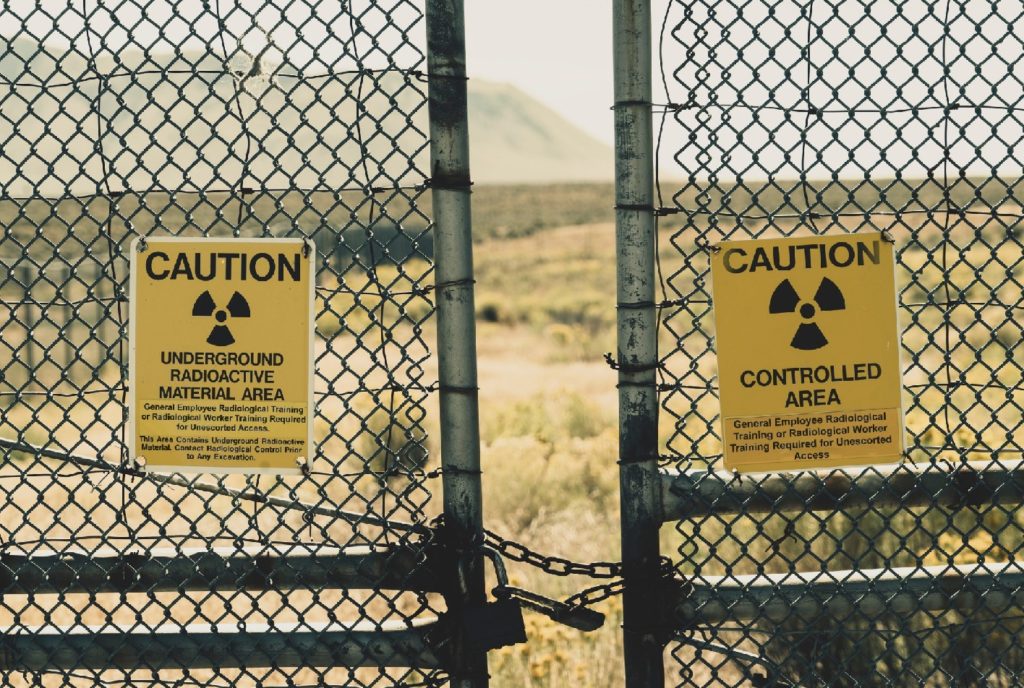When we’re on site with a nuke, we get a lot of questions about the safety of our nuclear gauges. Are they safe to be around? Are we wearing any kind of protection? Do workers on the site need to be warned to stay back a certain distance?
Most commonly: Are they dangerous?
The answer: Kind of. But not really.
What Makes Nuclear Density Gauges Dangerous?
As you may have guessed from their name, a nuclear densometer uses nuclear energy to measure the density of the soil being tested. Of course it follows that operators of the nuclear gauge, and anyone who spends time around them, are inevitably exposed to radiation.

How does this translate to the gauge’s effects on worker’s health? To answer that, first we’ll need to quickly discuss how radiation exposure is measured.
Basically, the way radiation exposure risk is measured assumes that a dose of radiation of any size comes with a proportional increase of cancer risk. Makes sense.
This additional exposure to radiation is what makes being around the gauge dangerous.
How Much Radiation Does a Nuclear Gauge Expose Me To?
First, a quick rundown on how we measure radiation doses.
Radiation doses are measured in a unit called the “sievert” (Sv).
And,
1 Sievert (Sv) = 1000 millisieverts (mSv)
1 millisievert (mSv) = 1000 microsiever (µSv)
While living your day to day life you are exposed to several sources of ambient radiation, such as cosmic radiation (from the sun, mostly), and terrestrial radiation (from radioactive elements found in the earth), resulting in an annual exposure to background radiation of approximately 1.8 mSv.
For comparison, studies indicate that for every test (shot) that a gauge operator performs, they are exposed to approximately 1.2 µSv.
From this number, we can calculate the annual exposure amount and compare it to regulatory numbers that indicate a threshold where increased cancer risks are to be expected.
This number is approximately 850 tests in a year, which works out to approximately 1 mSv.
From earlier in the article we learned the typical exposure to radiation that every average person experiences is 1.8 mSv.
How Can I Minimize My Exposure?
Thankfully we aren’t being exposed to a whole lot of radiation from our nuclear densomters, but the risk is still there.
Our first thought was how can we protect ourselves and our clients.
Well, there are three ways to mitigate the amount of radiation your absorb from your nuke.
- Shielding
- Keep dense objects between you and the nuke. Think steel, concrete, soil.
- Nuclear gauges come with thick shielding that encase the source when not in use.
- The gauge is always emitting radiation even when not in use, shielding just reduces the amount.
- Retract the rod as soon as the test is over. Don’t leave it extended while you’re recording results.
- Never look at the source rod.
- Time
- Minimize the amount of time you’re around the nuke.
- Set up the testing area first – flatten the area, drive the pin, and have it ready. Then bring the nuke over perform the test
- Don’t stand next to the gauge during testing
- Don’t leave the gauge near yourself or others when not in use. People love congregating around the nuke for some reason. A good technician will shoo them away!
- Distance
- Store the nuke away from everyone!
- Stay back while testing is underway.
Conclusion
Working around nuclear density gauges does come with some risk, but unless you are performing a LOT of tests, you are probably going to be okay. You should still do your best to reduce your exposure, and ensure you and your company are taking nuclear gauge safety seriously.

